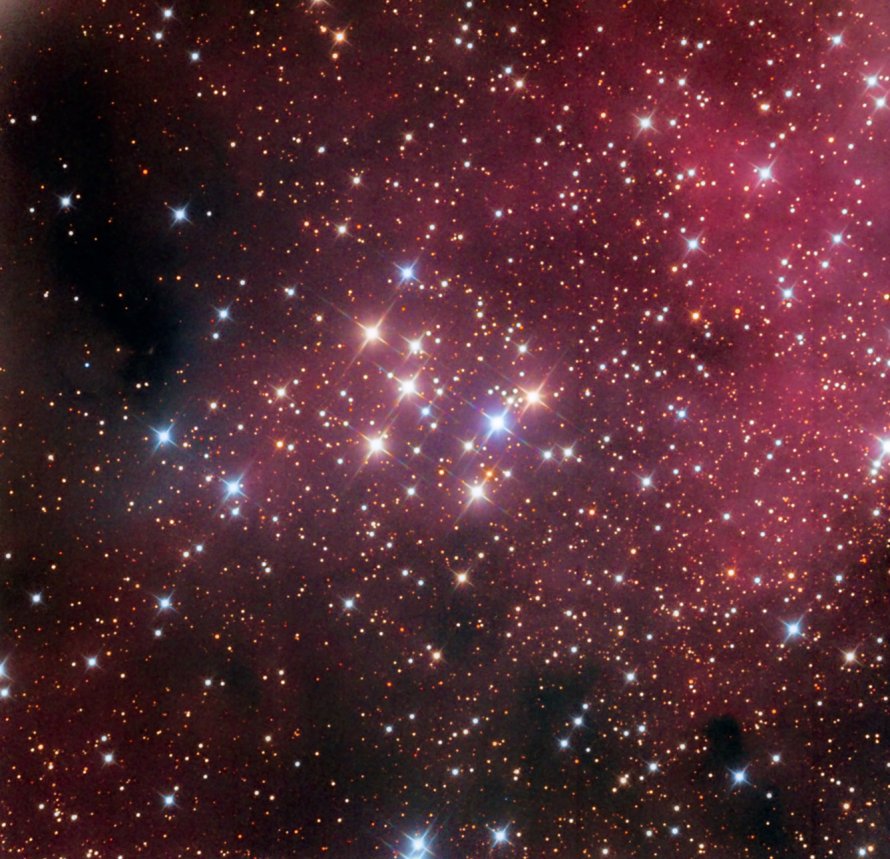M29 (NGC 6913) - Cooling Tower
Messier 29 (NGC 6913), also known as the Cooling Tower, is an open cluster located in the constellation Cygnus, in the Orion Arm of the Milky Way Galaxy in the Local Group of galaxies. M29 is 3700 light years away from Earth.
M29 is best viewed during early spring, is magnitude 6.6, and can be viewed with binoculars. M29 is 7' in apparent size. For reference, the full moon is 30'.
Observing difficulty: Easy
- Name:
- Cooling Tower
- Type:
- open cluster
- Constellation:
- Cygnus
- NGC or IC:
- NGC 6913
- Magnitude:
- 6.6
- Viewing:
- binoculars
- Size:
- 7'
- Distance (light years):
- 3700 LY
- RA:
- 20h 23.9m
- Dec:
- 38 32'
- Season:
- early spring
- Milky Way location:
- Orion Arm
- Galaxy group:
- Local Group
- Messier Marathon #:
- 73
* The naked eye can see up to magnitude ~7-8 objects under ideal dark sky conditions.
An Intriguing Open Cluster in Cygnus
Located in the constellation of Cygnus, the Swan, is an intriguing open star cluster known as Messier 29 (M29). Though not as populous or as prominent as some of its neighboring clusters, M29 remains a fascinating celestial object worth studying and observing. This article will delve into the discovery and characteristics of M29, its apparent magnitude, and provide an observer's guide to finding and viewing this cosmic entity.
Discovery and Observation
Charles Messier first cataloged M29 in 1764, but due to its location within the rich star fields of the Milky Way, it was likely known to ancient astronomers. The cluster resides about 4,000 light-years away, within one of the spiral arms of our galaxy.
Physical Characteristics and Magnitude
M29 is relatively small for an open cluster, composed of a modest population of around 50 stars spread across an area 7 light-years in diameter. The brightest members are supergiant stars, displaying a vivid blue hue that suggests a relatively young age for the cluster of about 10 million years. M29 has an apparent magnitude of 7.1, which makes it a slightly challenging object for naked-eye observers but well-suited to binoculars and small telescopes.
Astronomical Significance
Studying M29 gives astronomers insight into stellar evolution, particularly the development of young, massive stars. The cluster's age and composition help shed light on the process of star formation and the dynamic interactions within a group of stellar siblings. Despite its relative obscurity, M29 holds valuable clues about the life cycles of stars and the structure of our Milky Way Galaxy.
Finding and Viewing M29
M29 is nestled in the rich constellation Cygnus, which is easy to spot due to its characteristic cross shape and its position along the Milky Way. The cluster is located near the star Gamma Cygni, which sits at the intersection of the cross. With binoculars or a small telescope, observers will be able to spot M29 as a fuzzy patch against the backdrop of countless distant stars. Under good conditions, a telescope will resolve individual stars, presenting a delightful view of this stellar family.



